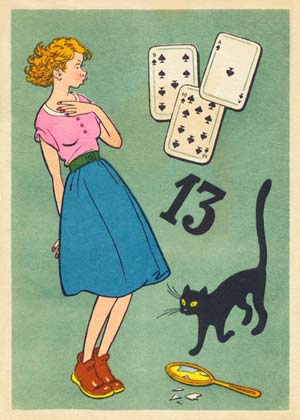The first year of a baby's life is a very important and crucial period. At this time, "ripening" of his body occurs, the base of his future health continues to form. A lot depends on the actions of parents, so mothers and fathers are very serious about basic issues: nutrition and caring for a child. And in fact, and in another case, there are a lot of rules and restrictions. Some of them are really justified, others - from the category of superstitions and delusions. Consider what really can not be a child up to a year.

Food bans
Restrictions in nutrition become relevant after about 6 months, that is, when the child begins feed. Parents and grandmothers are always tempted to pamper the baby with sweet, surprise him, give him new products and taste new tastes. This impulse is better to limit, because a child under the age of one can not eat everything. To help mothers - a list of products that can not be given to the baby.
1. Confectionery and “shop” sweets.
This category includes sweets, chocolate, cake and cakes, sweet shop pastries. Sugar is really needed and permissible in food, but confectionery products are dangerous not so much by the presence of sugar as by the fact that they contain harmful confectionery fats, low-quality vegetable oils (palm, canola), various artificial additives and dyes. In this sense, the child is better to just eat a piece of sugar than candy.
Separately, it is worth stopping at the use of chocolate. Cocoa is a very allergenic product, so it must be excluded from the baby’s diet. In addition, chocolate invigorates and can provoke overexcitation.
2. Salt and pickles.
When a baby is just starting to taste "adult" food, it is important that he feels the "pure" taste of food, without any improvers. In addition, salt causes fluid retention in the body and increases the load on the kidneys and blood vessels.
It is important not only not to add salt to what is on the plate, but also to exclude from the diet all salty foods, for example, salty crackers and straws, not to mention pickled cucumbers or, especially, fish.
3. Sausages.
Sausages and sausages should not be present on the baby's menu. Even high-quality sausages contain a lot of harmful additives: dyes, preservatives, flavor enhancers. In addition, such products contain the so-called "hidden fats."
4. Fatty meats.
Fatty meat is pork, lamb, as well as meat of waterfowl (goose, duck). The fact is that fatty meat is very difficult to digest and creates a large load on the liver. Given the immaturity of the children's digestive system, eating fatty meat can lead to a breakdown in digestion.
5. Potentially allergenic berries, fruits and vegetables.
Berries, fruits and vegetables with red pigment are traditionally allergenic: strawberries, red apples, tomatoes, red peppers and others. In addition, citrus fruits and any exotic fruits foreign to our climate are considered allergenic.
6. Products that enhance gas formation.
Some products provoke increased gas formation. Their use is not welcome, because for the baby "gaziki"Is a great discomfort. Such products include legumes, cabbage, grapes, melon.
7. Seafood.
It is impossible to argue that seafood is very rich in useful substances and protein, however, even fish in the feeding scheme is in the last positions, and seafood should not be present in the baby’s diet at all. The reason is a high risk of developing an allergic reaction. In particular, we are talking about shrimp, squid, mussels.
8. Mushrooms.
Although mushrooms are called “second meat”, they are not at all useful for a child. Mushrooms are quite heavy food, even for an adult, they are difficult to digest and are absorbed by the body. In addition, it is known that mushrooms “absorb” various poisons, heavy metals and radiation.
9. Shop seasonings, sauces, marinades and spices.
The composition of store sauces for dishes, ketchup and mayonnaise completely contradicts the rules of a healthy diet: the basis of these products are dyes, flavors, and flavor enhancers. Also, flavor enhancers and a lot of salt contain dry seasonings. With spices, you also need to be very careful: some of them irritate the digestive tract (onions, garlic), and some can even cause allergies. If you want to improve the taste of the dish, you can limit yourself to fresh greens of dill or parsley from your garden, without losing your sense of proportion.
10. Carbonated and sugary drinks.
"Soda" is harmful not only for babies, but also for adults, for many reasons. Firstly, it contains carbonic acid, which provides magic bubbles. Once inside, these vesicles are very irritating to the gastric mucosa. Secondly, carbonated drinks contain dyes and flavors. Thirdly, usually in "soda" a lot of sugar. By the way, for increased sugar content from the menu of a child up to a year, it is better to exclude juices. In addition to sugar, they also contain fruit acids, which are too aggressive for the children's stomach.
11. Whole cow's milk.
The protein of cow's milk is foreign to our body, therefore, it can cause allergies in the child. In addition, cow's milk is difficult to digest. It is not recommended to use whole cow's milk in the nutrition of children up to one year old either as a drink or as a liquid component when cooking porridge or making mixtures.
On this topic: cow milk for the baby (can or not)
12. Chicken egg.
Many consider chicken egg to be a very nutritious and healthy product. This is true, but for a child up to a year old, eggs are a dubious diet. Chicken protein is a strong allergen, and the yolk contains a lot of fat, therefore it is useful only in very small doses.
13. Gluten-free cereals.
Gluten is a plant protein found in almost all cereals. It is considered very allergenic, so children under one year old are better off not giving gluten-containing cereals. They include almost everything except corn, buckwheat and rice. Especially undesirable in baby food is semolina porridge. Our mothers and grandmothers like to talk about the 5% porridge that the baby should suck from the bottle, but in fact semolina porridge, firstly, contains a lot of gluten, and secondly, it is very poor in composition and it does not have many necessary for growth and development of substances.
On this topic: food allergy in a child
Superstitious bans
 Why one cannot give a child a product is understandable to any competent mom. However, in addition to understandable prohibitions on products, there are prohibitions that are firmly entrenched in people's minds, but explaining them is very difficult. These prohibitions are from the realm of superstitions; they have been familiar to many since childhood, and, having become parents, people continue to follow them.
Why one cannot give a child a product is understandable to any competent mom. However, in addition to understandable prohibitions on products, there are prohibitions that are firmly entrenched in people's minds, but explaining them is very difficult. These prohibitions are from the realm of superstitions; they have been familiar to many since childhood, and, having become parents, people continue to follow them.
- You can not cut hairs for up to a year. In many cultures, a child under one year old is not even given a name. This is due to the fact that in ancient times, infant mortality was very high and many simply did not survive to the age of one year. Perhaps that is why the belief arose that such a baby should not be cut - he is not yet a full member of the family;
- You can’t kiss the heels of the baby - it will start to walk late. In the same series, the superstition that you cannot kiss a child on the lips - he will speak late. Most likely, these prohibitions arose for reasons of hygiene. Kiss calmly, there is no connection between kisses and walking;
- It is impossible for the baby to look in the mirror. According to superstition, in a mirror a child can see the other world, his past lives and can be frightened. There are also such explanations: the child will see his happiness, may become shy, may not start talking for a long time, his teeth will erupt badly, may cause frequent illnesses, may become stuttering, promote strabismus, the child’s soul will go into the looking glass, the negative accumulated in the mirror can pass into the child’s soul, and etc. In fact, kids are very fond of considering themselves, and the ban was most likely due to the fact that in ancient times mirrors were a luxury item, and a child could break it by negligence. Psychologists believe that looking at a child in the mirror is even useful, because it contributes to the development of the child's psyche and personality. Already from the age of 4 months, the baby begins to understand that other objects and people can be displayed in the mirror, from the age of one the baby begins to understand that he himself is displayed in the mirror. If a child experiences negative emotions when he sees himself in the mirror, then this is an occasion to contact specialists for the possible exclusion of mental deviations;
- You can’t look at the sleeping baby - it will grow fearful. This is only partly superstition, and partly a very real pattern. Waking up suddenly, the baby may be scared when he sees an adult;
- You can not put the child on the table - there will be a lot of crying in life. In this superstition, one can also see a certain pattern: sitting on a table is dangerous for the baby. Having fallen, he really will cry a lot, just this meaning may have faded with time;
- You can’t blow the baby in the face - fate will be confused. Our ancestors once again tried not to touch the children's face. They believed that this would not lead to good.
Blindly following all these prohibitions is not necessary, but caution is really worth it. True, it is better to do this for reasons of common sense, and not out of superstitious fears.









Everything is written correctly. I always try to control and think a hundred times before giving my daughter this or that product. Basically, I pamper her with a grated apple or carrot. But all our danger comes from the grandmother, who strives to give either candy (“But she’s soft!”), Or a piece of chocolate, which I categorically forbid.
I’ve come across several times why it’s impossible to cut a baby up to a year, but still haven’t received a clear answer. At the expense of nutrition, it turns out that besides mother's milk, nothing is possible for him. These are all modern stereotypes of modern doctors. About milk, I can say for sure that it does not harm the child, the whole history of a person’s life was given, if necessary, cow’s milk and everything was fine, and with the advent of 2000 it suddenly became hypoallergenic. We really only give chicken meat to the child, and then we try from jars of fruto nanny.
Personally, I do not believe in superstitious prohibitions. I don’t understand why this is being invented. That's about nutrition correctly written. I can add on my own that nursing mothers also need to diet. I fed my daughter as expected, but I ate the chocolate myself. As a result, her daughter had dermatitis in a year and now she is already 2, and we still cannot get rid of him.
For the most part, everything is correctly written, but you need to make a discount on the individuality of each child. We are one year old and we all eat. Until three months I was on a strict diet, lure was introduced in half a year. Now the baby and I eat fish, strawberries, kiwi, cheese, eggs, liver, potatoes, onions, cabbage, peas and there are no gas or dermatitis. I continue to breastfeed at night while eating chocolate.
And you can’t fish until a year old, because he won’t speak)))))
KAPETS DIRECT, HUNGER TO GO WHAT DOES !? WE EAT EVERYTHING AND DRINK MILK I AND MY DAUGHTER AND NOTHING EVERYTHING NORMAL. EATES IT IS ALL BUT ALMOST SOMETHING.